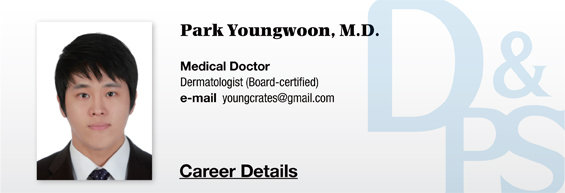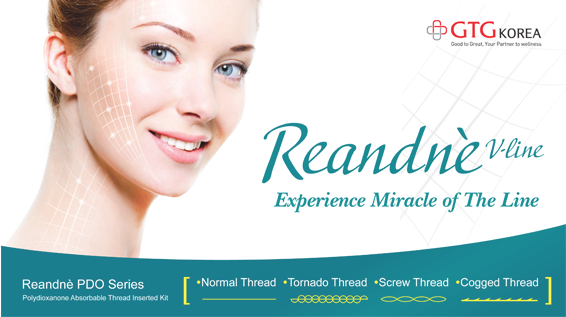A recent study examined a new pulse mode of Laser toning called dual-pulsed Laser toning or photoacoustic therapy pulse (PTP). This novel QS pulse-to-pulse mode is operated as a dual pulse at half fluence and 50-150-microsecond intervals.73-75 Some research suggests that the delay time between two subpulses allows melanocytes to cool down while destroying melanosomes.
Kim et al.73 reported that the PTP technique resulted in less hypopigmentation compared to the traditional technique in treatment of PIH. In another study demonstrating the effect of the PTP mode in Riehl’s melanosis, Chung et al.74 proposed that the dual-pulsed mode caused less proinflammatory transcription factors and cytokines to be able to provide a safer treatment than the conventional Laser toning.
There is only one published paper reporting the therapeutic effect of the PTP mode in melasma.75 Better clinical outcomes with less treatment-associated pain were obtained with the QS PTP-treatment than the QS single pulse-treatment.75
They suggested that the QS PTP mode might be useful in treatment of melasma, especially on the thin skin of the periorbital lesions, and to erythema-prone and sensitive patients. In our practice, we are using the PTP technique with excellent results and hope that more research will be performed on this new technique in the near future.
8. New Laser Therapies
The low-fluence QS alexandrite Laser, QS ruby Laser, QS ruby fractional Laser, copper bromide Laser, and picosecond alexandrite Laser have been proposed as alternatives to Laser toning using the QS Nd:YAG Laser.76-80 Although the conventional Laser treatment of melasma using QS alexandrite Laser and QS ruby Laser has brought poor results, lowering the fluence or using the fractional mode is expected to widen the application of these Lasers in melasma. The copper bromide Laser was consistently reported to have disappointing results in the literature with the exception of a Korean study published in 2010.80-82
In the late 1990s, a study reported that the picosecond Laser had superior efficacy than the nanosecond Laser in tattoo removal.83 The picosecond alexandrite Laser was developed and shown to be effective in tattoo removal,84,85 leading to its recent commercialization.
Unlike tattoo removal, it is unclear whether the picosecond alexandrite Laser will be superior to the previous nanosecond Lasers in melasma treatment. Theoretically, the shorter pulse width of the picosecond Laser can minimize the collateral damage and selectively target melanosomes. Considering the TRT of melanosomes, however, it is unclear whether the picosecond Laser will have clinically significant superiority over the nanosecond Laser.
One should also consider the characteristics of the 755-nm wavelength applied to the picosecond alexandrite Laser. Newly proposed Laser therapies of melasma lack safety and efficacy data and need more research and clinical long-term experience.
[Advertisement] Reandnè Thread Series – Manufacturer: GTG KOREA(www.gtgkorea.com)
Conclusion
As mentioned earlier, in patients with melasma that have poor response to Laser toning, a clinician can often make the mistake of increasing the fluence for getting strong tissue reactions and initial improvement. Such an approach should be avoided. Various treatment modalities of melasma other than the Laser toning have been developed. It is important for dermatologists to clearly understand different mechanisms and properties of each treatment. That allows them to choose the optimal modalities for each patient and lesion state. It can also guarantee better efficacy and safety.
When dealing with a non-responder, it is helpful to switch to another treatment or combine other treatments. However, the first and most important is to check whether the patient follows the basic element of melasma treatment consisting of sun avoidance, regular sunscreen use, and discontinuation of birth control pills, irritating cosmetics or phototoxic drugs. UV is a leading cause of melasma and a fundamental part of its pathophysiology.
Patients should be instructed to avoid UV exposure and wear a sunblock. In addition, they should discontinue hormone therapies or oral contraceptives that can trigger or aggravate melasma. The presence of systemic conditions, phototoxic drugs, psychological/physical stress, or the use of irritating cosmetics must also be checked in detail. Even though there is universal agreement that the above elementary approaches are essential in the treatment of melasma, many doctors often neglect to examine thoroughly if a non-responder follows them steadily. We recommend that the basic parts of treatment are checked and identified before applying a new treatment method in non-responders.
-To be continued
References
73. Kim BW, Lee MH, Chang SE, Yun WJ, Won CH, Lee MW, et al. Clinical efficacy of the dual-pulsed Q-switched neodymium:yttrium-aluminum-garnet Laser: Comparison with conservative mode. J Cosmet Laser Ther 2013;15:340-1.
74. Chung BY, Kim JE, Ko JY, Chang SE. A pilot study of a novel dual-pulsed 1064 nm Q-switched Nd: YAG Laser to treat Riehl's melanosis. J Cosmet Laser Ther 2014;16:290-2.
75. Cho SB, Kang JS, Goo BL. A pilot split-face comparison of Q-switched (QS) single pulse versus QS quick pulse-to-pulse 1,064-nm Nd:YAG Laser treatment in a patient with melasma. Med Lasers 2013;2:76-81.
76. Fabi SG, Friedmann DP, Niwa Massaki AB, Goldman MP. A randomized, split-face clinical trial of low-fluence Q-switched neodymium-doped yttrium aluminum garnet (1,064 nm) Laser versus low-fluence Q-switched alexandrite Laser (755 nm) for the treatment of facial melasma. Lasers Surg Med 2014;46:531-7.
77. Omi T, Yamashita R, Kawana S, Sato S, Naito Z. Low Fluence Q-Switched Nd: YAG Laser Toning and Q-Switched Ruby Laser in the Treatment of Melasma:A Comparative Split-Face Ultrastructural Study. Laser Ther 2012;21:15-4.
78. Jang WS, Lee CK, Kim BJ, Kim MN. Efficacy of 694-nm Q-switched ruby fractional Laser treatment of melasma in female Korean patients. Dermatol Surg 2011;37:1133-40.
79. Hilton S, Heise H, Buhren BA, Schrumpf H, Bolke E, Gerber PA. Treatment of melasma in Caucasian patients using a novel 694-nm Q-switched ruby fractional Laser. Eur J Med Res 2013;18:43.
80. Lee HI, Lim YY, Kim BJ, Kim MN, Min HJ, Hwang JH, et al. Clinicopathologic efficacy of copper bromide plus/yellow Laser (578 nm with 511 nm) for treatment of melasma in Asian patients. Dermatol Surg 2010;36:885-93.
81. Hammami Ghorbel H, Boukari F, Fontas E, Montaudie H, Bahadoran P, Lacour JP, et al. Copper Bromide Laser vs Triple-Combination Cream for the Treatment of Melasma: A Randomized Clinical Trial. JAMA Dermatol 2015;151:791-2.
82. Eimpunth S, Wanitphakdeedecha R, Triwongwaranat D, Varothai S, Manuskiatti W. Therapeutic outcome of melasma treatment by dual-wavelength (511 and 578 nm) Laser in patients with skin phototypes III-V. Clin Exp Dermatol 2014;39:292-7.
83. Ross V, Naseef G, Lin G, Kelly M, Michaud N, Flotte TJ, et al. Comparison of responses of tattoos to picosecond and nanosecond Q-switched neodymium: YAG Lasers.Arch Dermatol 1998;134:167-71.
84. Brauer JA, Reddy KK, Anolik R, Weiss ET, Karen JK, Hale EK, et al. Successful and rapid treatment of blue and green tattoo pigment with a novel picosecond Laser. Arch Dermatol 2012;148:820-3.
85. Saedi N, Metelitsa A, Petrell K, Arndt KA, Dover JS. Treatment of tattoos with a picosecond alexandrite Laser: a prospective trial. Arch Dermatol 2012;148:1360-3.






















